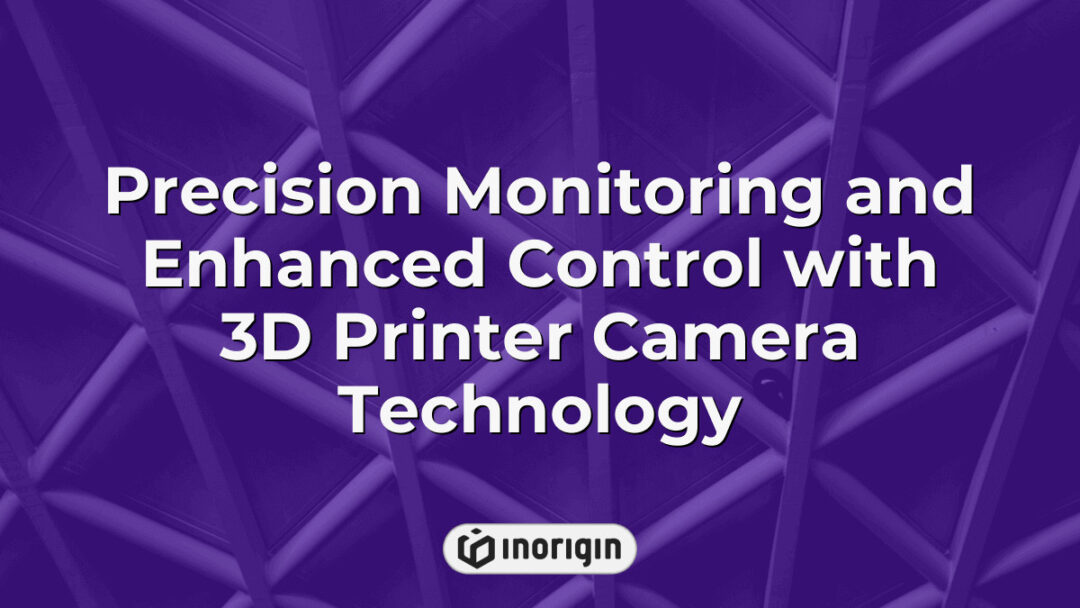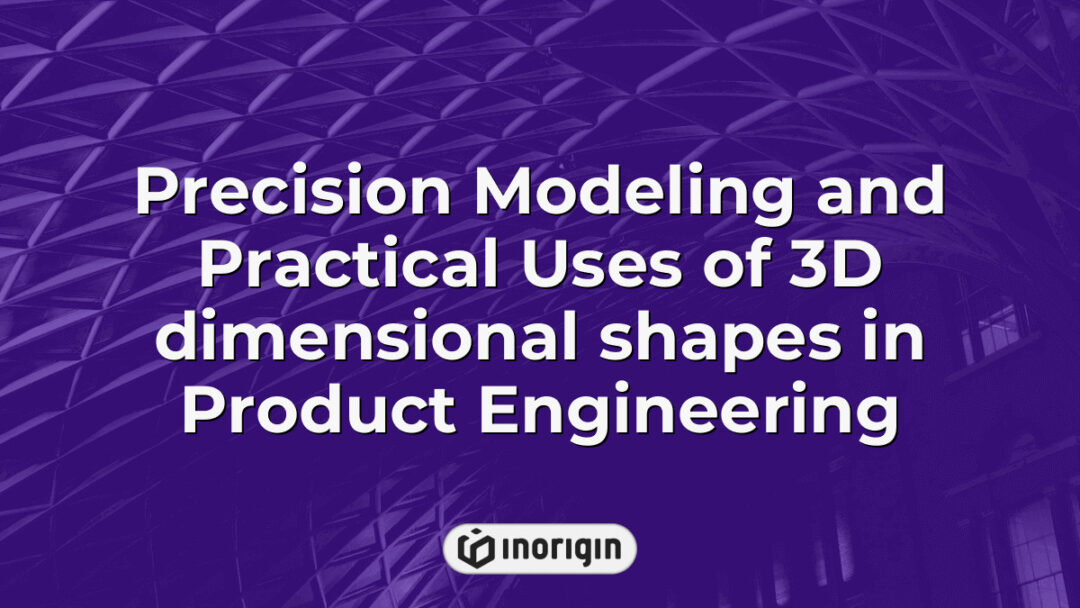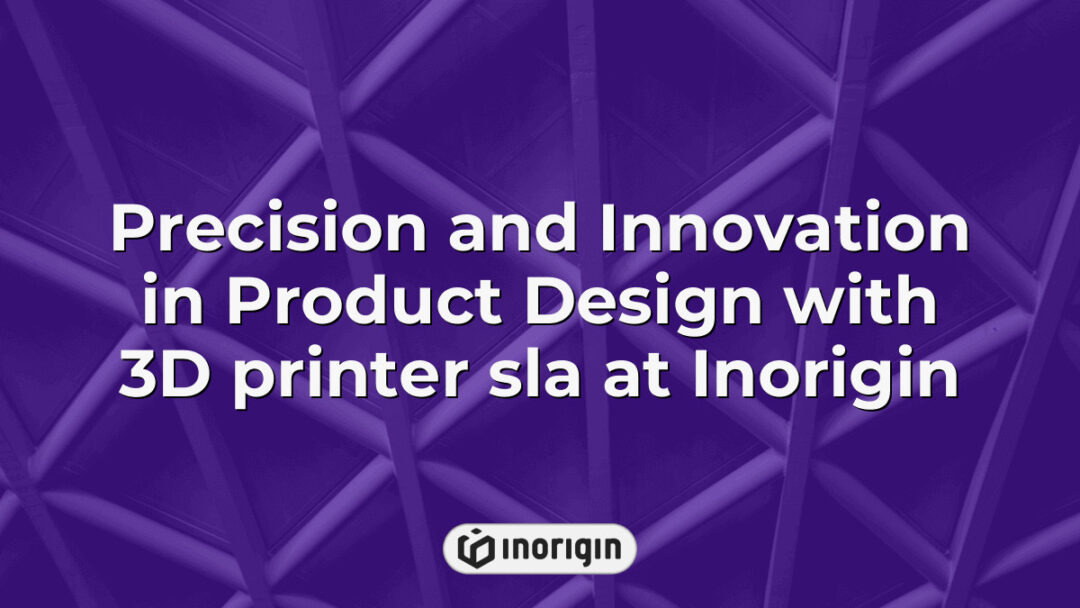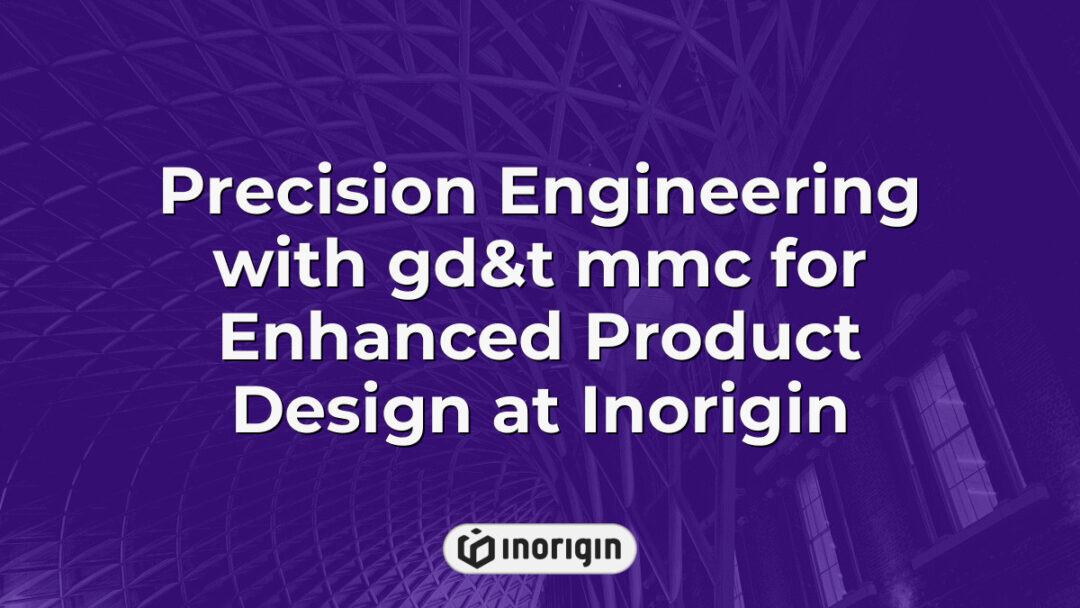As the whirring of a 3D printer fills the air, a silent sentinel, equipped with a 3D printer camera, stands vigil over the innovative process of additive manufacturing. This technology, often overlooked, holds the key to a new dimension of monitoring and enhancing print accuracy, while unveiling the hidden intricacies of layer-by-layer creation. Imagine the ability to pause a print at the slightest hint of an anomaly, to witness the transformation of digital blueprints into tangible objects in real-time, and to harness the analytical power of visual data collection. The intersection of these technologies not only promises to elevate quality assurance but also raises tantalizing questions about the future of 3D printing methodologies. Exploring the capabilities and implications of 3D printer cameras reveals a fascinating narrative that could redefine how creation unfolds in the modern workshop.
| Αποψη | Key Takeaway |
|---|---|
| Role of 3D Printer Camera | A 3D printer camera provides precise visual monitoring to detect anomalies early, enhancing print accuracy and reliability during additive manufacturing. |
| Selecting the Ideal Camera | Choose a camera with high resolution, suitable field of view, consistent lighting adaptability, and seamless connectivity to optimize monitoring performance. |
| Installation and Setup | Most 3D printer cameras offer straightforward installation with flexible mounting options and user-friendly connectivity for efficient integration. |
| Remote Monitoring Advantages | Live streaming features enable users to observe print progress remotely, reducing oversight concerns and improving workflow management. |
| Resolving Common Issues | Ensure stable network connections, perform regular camera calibration, and maintain software compatibility to avoid monitoring interruptions. |
| Advanced Features and Integrations | Integrating 3D printer cameras with platforms like OctoPrint enhances real-time control and enables customized time-lapse recordings for in-depth analysis. |
| Optimizing Lighting Conditions | Employ diffused and directional lighting with a color temperature around 5000–6000K to significantly improve image clarity and detail capture. |
Choosing the Right Camera for Your 3D Printer
Choosing the right camera for a 3D printer is crucial, especially considering that an estimated 50% of users experience diminished print quality when the monitoring setup is inadequate. A suitable camera specifically designed for 3D printer surveillance should not only be compatible with various printer models but also provide ultra clear resolution to ensure detailed monitoring throughout the printing process. When evaluating options, one must consider various factors, including the camera’s field of view, night vision capabilities, and connectivity features, as these elements can significantly influence the effectiveness of print oversight. Furthermore, while various brands may offer differing levels of performance, the emphasis should remain on cameras that enhance the overall user experience by delivering sharp imagery even in challenging lighting conditions, ultimately influencing print success. Selecting an appropriate camera unlocks the potential for better management of print jobs, which, combined with the right technology, leads to consistently reliable results.
Installation and Setup Guide for 3D Printer Cameras
The installation and setup of 3D printer cameras significantly impact their overall functionality and user experience. First, the cameras are designed to be easy to install, thus facilitating a smooth integration into various 3D printing setups. Many models follow a plug-and-play approach, which further enhances accessibility for users of differing experience levels. For instance, some cameras come equipped with simple mounting solutions, while others may require a DIY frame for optimal positioning. This flexibility allows for adjustments based on the specific printer model as well as personal preferences. Transitioning from installation to setup, connection to the 3D printer typically involves straightforward procedures, whether one is utilising USB connectivity—or, in cases where wireless options are available, a simple router setup. Each step in this guide serves to ensure that users can swiftly go from unboxing to operational status, allowing for a seamless transition into capturing 3D print processes effectively.
Monitoring and Remote Viewing of 3D Prints
The monitoring and remote viewing of 3D prints introduces a paradigm shift in the interaction between users and their printers, creating vivid imagery of printers operating autonomously while the user is miles away, perhaps even engrossed in other tasks. Remote monitoring technologies, particularly live view cameras, facilitate real-time oversight of print jobs, bridging the physical gap that often threatens project outcomes. Users can observe their creations take shape in real time, enhancing not only productivity but also reducing the anxiety associated with potential mishaps. In practical terms, this means a live camera can transmit high-definition video, allowing for scrutiny of each layer being printed—should any issues arise, such as warping or filament failure, immediate action can be taken via mobile alerts. As the engagement with remote technologies evolves, there is a discernible shift in how creators manage their time and workflows; the freedom afforded by live monitoring capabilities significantly enhances the potential for error-free projects. Acquiring such a setup may require an initial investment in the right camera technology—certain models offer features like motion detection and cloud storage for simplified access to footage. As these innovations continue to permeate the 3D printing sector, they not only enhance the operational flow but also fundamentally transform the user experience, making remote viewing an indispensable facet of modern 3D printing practices.
Troubleshooting Common 3D Printer Camera Issues
The troubleshooting of common 3D printer camera issues can present a multifaceted challenge, particularly due to the complexities associated with the control system of these connected machines. Visualising the scenario, an operator might find monitoring compromised by inconsistent feed, latency problems, or even complete disconnection. Each of these faults can severely impact the ability to oversee ongoing prints. The following key points illustrate frequent issues encountered:
- Intermittent connectivity, which can stem from poor Wi-Fi signal strength or interference from other devices.
- Camera calibration, a critical process that ensures the right angles and focus are set, which can often be overlooked during setup.
- Software compatibility, where updates or mismatches between the camera firmware and printer software can lead to erratic behaviour.
Addressing these factors necessitates a systematic approach to troubleshooting. Starting with connectivity, users should ensure that signal strength is adequate, often requiring closer proximity to the router or the use of range extenders. Following that, camera calibration must be revisited, ensuring that the device accurately captures the print area without distortions. Lastly, software must be regularly updated or confirmed to be mutually compatible to eliminate bugs or glitches in functionality. Capturing images and monitoring prints hinges on correctly resolving these matters, as shortcomings can cascade into larger operational failures, thereby significantly hindering the print process and efficiency overall.
Exploring Advanced Camera Features and Software Integrations
The exploration of advanced camera features and software integrations within the domain of 3D printer cameras presents a myriad of opportunities to enhance the capabilities and effectiveness of time lapse recordings. Transitioning from basic functionalities, many cameras now offer sophisticated options—such as adjustable frame rates and resolution settings—allowing users to tailor recordings to specific project requirements. Furthermore, integrating these cameras with platforms like OctoPrint facilitates remote monitoring and control, yielding a more manageable printing process. This integration not only streamlines the workflow but also enhances the ability to address potential printing issues as they arise, which is crucial in maintaining the quality of prints. Additionally, innovative online applications provide users with powerful editing tools, enabling the transformation of raw footage into polished time lapse videos, thus enriching the presentation of printed objects.
For optimal results, it is recommended to regularly update both camera firmware and OctoPrint software, as new features or bug fixes can significantly improve functionality and compatibility. Investing time in familiarising oneself with these updates can ultimately lead to more efficient printing processes and superior visual outcomes in recorded time lapse projects.
Συχνές Ερωτήσεις
What are the best brands of cameras for 3D printing?
When selecting a suitable camera for 3D printing needs, several brands rise to prominence, showcasing their specific strengths in capturing the intricacies of the printing process. First and foremost, the Canon brand receives praise for its robust imaging technology, making it particularly effective for high-resolution capture, which is crucial for detailing printed objects. Meanwhile, the GoPro line stands out for its versatility and durable design, allowing for unique angles and perspectives, especially in dynamic environments. Transitioning to another important contender, the Logitech series offers a blend of affordability and advanced features; its easy integration with various software systems ensures streamlined monitoring throughout the printing cycle. Additionally, dedicated models like the Creality 3D camera have garnered focused attention, as they cater specifically to the 3D printing demographic, enhancing user experience through tailored functionalities. Each brand presents distinct attributes, guiding users toward effective choices that align with particular printing requirements, thereby facilitating the overall operational efficiency of 3D printing projects. Ultimately, assessing these brands reveals a landscape rich with options that can significantly enhance the 3D printing experience, ensuring practitioners are well-equipped to capture and analyse their creations with clarity and precision.
How can I improve the video quality of my 3D printer camera?
How can one enhance the video quality of a 3D printer camera? This question prompts an exploration of various techniques and technologies available today. First, adjusting focus and exposure settings can significantly affect image clarity, as cameras often struggle to adapt to varying conditions around a 3D printer. For instance, using a manual lens setting may help achieve sharper images compared to automatic settings that might overexpose or underexpose depending on lighting. Furthermore, upgrading to higher resolution cameras — particularly those that provide at least 1080p — can facilitate capturing finer details of the printing process. The selection of a quality lens is another area deserving consideration, as a well-crafted lens can greatly enhance depth of field and reduce distortion. In addition, incorporating proper lighting can eliminate shadows and highlights, allowing for a more balanced and true-to-life representation of the printed object. Overall, the synergy of these adjustments not only improves quality but also enriches the viewer’s understanding of the 3D printing process. Some practitioners may even find that utilising external capturing devices or integrating software for post-processing further elevates video output, revealing insights previously overlooked.
Are there any specific lighting requirements for optimal camera performance during 3D printing?
In the epoch when the Wright brothers took their first flight, the role of lighting in enhancing camera performance during 3D printing was likely unimaginable. Lighting conditions can significantly influence the clarity and detail captured by a 3D printer’s camera. Numerous studies indicate that adequate illumination, typically in the range of 500 to 1000 lux, can vastly improve image quality by reducing noise and enhancing colour accuracy. Furthermore, there are specific configurations that can yield optimal results; for instance, a combination of diffused and directional lighting can eliminate harsh shadows and reflections, which are detrimental to the camera’s focus. Additionally, the colour temperature of the light—generally recommended to be around 5000 to 6000 Kelvin—can also impact performance; cooler light mimics daylight, which can aid in highlighting the intricate features of a print job. Therefore, evaluating the lighting setup becomes essential for ensuring that the camera can effectively capture the minutiae of the printing process, ultimately enhancing the quality of the visual output. Experimental approaches, such as varying the height and angle of light sources, have been shown to yield significant improvements in visual fidelity, rendering the notion of lighting as a key contributor to camera performance.
Σύναψη
In the realm of 3D printing, the integration of cameras functions as the vigilant eye of a skilled artisan, ensuring precision and quality control. As data indicates that 20% of print failures stem from undetected issues, the role of these cameras becomes paramount, embodying a technological guardian in the creative process.
Σχετικές αναρτήσεις:
- Δομικές καινοτομίες και προόδους υλικού που διαμορφώνουν το μέλλον της κάμερας με 3D εκτύπωση
- Τεχνικές ακριβείας για τη δημιουργία τρισδιάστατου μοντέλου από φωτογραφίες για άψογο σχεδιασμό προϊόντων
- Ecm & cluster update-engine monitoring logic product improvement Driving Real-Time Efficiency and System Reliability at Inorigin
- Octo Pi’s Advanced Role in Streamlining 3D Printing Management at Inorigin
- Ακριβείς τεχνικές για τη δημιουργία τρισδιάστατου μοντέλου από φωτογραφίες για άψογο σχεδιασμό προϊόντων
- Τεχνικές 3D rendering Driving Architectural Design and Visual Realism at Inorigin




